LIÊN QUAN GIỮA MỘT SỐ YẾU TỐ NGUY CƠ, ĐA BỆNH VỚI ĐỘT QUỴ NÃO Ở NGƯỜI BỆNH CAO TUỔI
Nội dung chính của bài viết
Tóm tắt
Mục tiêu: Đánh giá mối liên quan giữa đột quỵ não và các yếu tố nguy cơ, đa bệnh, thời gian nằm viện, và nhóm tuổi ở bệnh nhân cao tuổi. Phương pháp: Nghiên cứu hồi cứu mô tả cắt ngang, thực hiện tại Khoa Cán bộ Cao cấp, Bệnh viện Quân y 103, từ tháng 12 năm 2022 đến tháng 10 năm 2024. Dữ liệu được thu thập từ 507 hồ sơ bệnh án của bệnh nhân từ 60 tuổi trở lên, đáp ứng tiêu chuẩn chọn lọc và bệnh được mã hóa theo ICD-10. Các kiểm định thống kê như Chi bình phương, One-way ANOVA, hồi quy đa biết logistic và Two-way ANOVA được sử dụng để phân tích dữ liệu. Kết quả: Bệnh nhân đột quỵ não có tỷ lệ tăng huyết áp (92,8%; 55,9%; p<0,001) và tỷ lệ đái tháo đường (39,8%; 23,8%, p<0,01) cao hơn so với nhóm không đột quỵ não. Tăng huyết áp là yếu tố nguy cơ độc lập dẫn đến đột quỵ não với OR = 0,13 (KTC 95%: 0,05 – 0,31, p=00. Thời gian nằm viện là yếu tố liên quan độc lập với đột quỵ não OR=1,07 (KTC 95%: 1,02 – 1,12, p=0,00). Số bệnh kết hợp ở nhóm đột quỵ cũng cao hơn đáng kể (5,42 ± 1,60 bệnh so với 4,22 ± 1,65 bệnh, p<0,0001). Kết luận: Đột quỵ não có liên quan chặt chẽ với tăng huyết áp, đái tháo đường và số bệnh kết hợp, làm tăng thời gian nằm viện. Trong đó tăng huyết áp là yếu tố nguy cơ độc lập dẫn đến đột quỵ não. Nghiên cứu này nhấn mạnh sự cần thiết của việc kiểm soát các yếu tố bệnh lý nền để giảm nguy cơ và gánh nặng đột quỵ.
Chi tiết bài viết
Từ khóa
Đột quỵ não, bệnh nhân cao tuổi, đa bệnh lý, thời gian nằm viện, tăng huyết áp, đái tháo đường
Tài liệu tham khảo
2. Ntiyani N, Letamo G, Keetile M. "Prevalence of and factors associated with hypertension, diabetes, stroke and heart attack multimorbidity in Botswana: Evidence from STEPS 2014 survey". PLoS ONE. 2022; 17(3): e0265722. HYPERLINK "https://doi.org/10.1371/journal.pone.0265722" https://doi.org/10.1371/journal.pone.0265722 .
3. Lucas-Noll, J., Clua-Espuny, J.L., Lleixà-Fortuño, M. et al. "The costs associated with stroke care continuum: a systematic review". Health Econ Rev. 2023; 13, 32. HYPERLINK "https://doi.org/10.1186/s13561-023-00439-6" https://doi.org/10.1186/s13561-023-00439-6 .
4. Nguyễn Thị Thanh Xuân, Nguyễn Ngọc Tâm, Trần Viết Lực, Nguyễn Thế Anh. "Tình trạng đa bệnh lý của người bệnh cao tuổi nhồi máu não lần đầu". Tạp Chí Nghiên cứu Y học. 2023; 170(9), 116-124. https://doi.org/10.52852/ tcncyh.v170i9.1907.
5. Amalia N, Widyaningsih V, Ichsan B. "Meta-Analysis the Effects of Hypertension, High Density Lipo-protein, and Diabetes Mellitus on the Risk of Stroke". Indones J Med. 2023; 08(04): 435-451. HYPERLINK "https://doi.org/-10.26911/theijmed.2023. 08.04.10" https://doi.org/-10.26911/theijmed. 2023.08.04.10
6. Khan, Safi U et al. “Clinical and Economic Burden of Stroke Among Young, Midlife, and Older Adults in the United States, 2002-2017”. Mayo Clinic proceedings. Innovations, quality & outcomes. 8 Apr. 2021; vol. 5,2 431-441., doi:10.1016/j.mayocpiqo.2021.01.015.
7. Lin, Kuan-Hung et al. “Determinants of Prolonged Length of Hospital Stay in Patients with Severe Acute Ischemic Stroke”. Journal of clinical medicine. 16 Jun. 2022; vol. 11,12 3457. doi:10.3390/jcm11123457.
8. Zhu D, Xuefeng S, Nicholas S, Chen S, Ding R, Huang L, Ma Y, He P. "Medical Service Utilization and Direct Medical Cost of Stroke in Urban China", International Journal of Health Policy and Management. 2022; 11(3), pp. 277-286. doi: 10.34172/ijhpm.2020.111.


